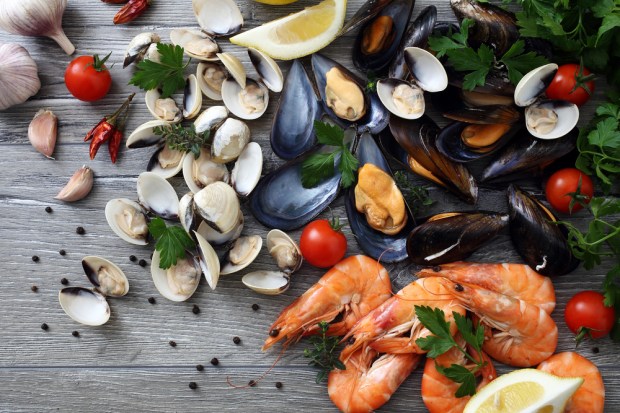The Unexpected Commerce Effects Of Lent

In one of the least romantic coincidences of all time, Lent kicked off on Valentine’s Day this year. One is our annual celebration of romance, lust, passion and chocolate — and the other is a large portion of the population’s annual festival of feeling bad about excesses of all kinds.
There is really no good way to celebrate them both at the same time. We imagine Lent took a backseat in more than a few cases.
But the “good” news about Lent is that it hangs around for a while — 40 days and 40 nights — and for the segment of the American population that observes it, it’s the time for giving things up and basically atoning. Some take it more seriously than others.
“My sister and I plan for Lent the way other people plan family vacations: What will we let go of?” Ann Patchet wrote for The New York Times.
Others are somewhat less ambitious in their customs and are content to swap out fish for meat on Fridays — and make a strong attempt to attend church from time to time.
But whatever their particular level of observance, a surprisingly large number of Americans participate — around 25 percent by some estimates, or roughly 80 million people. In practical terms, that makes Lent less popular than the Super Bowl — which has over 100 million viewers — and about twice as popular as the Academy Awards (37 million viewers).
And yes, that number of people observing an annual season of less does have a commerce effect.
Hit Hard
With the new year, people tend to make resolutions around improving their health: plans to join a gym, cut back on junk food or maybe even adopt a healthy diet.
Those intentions don’t tend to last all that long into the first few weeks of the year.
Statistically speaking, however, people tend to do a bit better with Lent — insofar as they’re a bit more likely to stick with whatever course of change they’ve settled upon, at least for the duration of the season.
Lent observers tend to be highly specific in what they resolve, which means certain industries are consistently hit hardest by the season where less isn’t just more — it’s pretty much all. Chocolate makers feel the burn most acutely, since it’s everyone’s favorite sacrifice. Sweets in general are also popular to give up, although they tend to rank a bit lower in the top 10 than chocolate by itself.
Alcohol, unsurprisingly, is also a popular thing to step away from during the season, as is coffee — people tend to start feeling bad about drinking either depressants or stimulants.
And, unfortunately for retailers, shopping is also a beloved Lenten sacrifice.
Unless, of course, one is buying fish.
The Most Wonderful Time of the Year (for Seafood Sales)
For grocery sellers, Ash Wednesday is Black Friday for seafood sales. And it carries on throughout the season, which typically produces the highest seafood sales in the United States, compared to any other 40-day time period.
Grocers recognize the trend and are advertising diligently in 2018, as the fight for grocery dominance has been particularly pointed.
Sales and specials are common. They’re also, according to seafood sources, for amateurs. The most dedicated chains are also conducting seafood demonstrations and featuring seafood recipes in their circulars and at the fresh seafood counter as they try to attract that magical, 40-day-a-year red meat customer who has switched to red snapper.
“We have been doing the [Fish Fridays] Lent promotion since 2012, and we continue to push those items right after Lent,” said Brian Harbach, seafood category manager for The Fresh Market. “When we offer those high-quality items at an aggressive price, we want to go back and run it again soon, so customers can remember how much they enjoyed it.”
What does best during the season of sacrifice?
Lobster, of course, because Americans can only sacrifice so hard.
Because Northeast U.S. and Canadian lobsters were plentiful this year, buyers are getting it at a low price — which has been good for customers and sales.
“In the Northeast, we were only allowed to sell lobster tails for the last six months. We started carrying 3-4 ounce and 5-6 ounce tails for grilling during the summer and stuffed during the winter and have sold around 12,000 of those in the last six months,” Arthur Ackles, a Roche Bros. director of seafood, deli and specialty cheese, said.
